Lot of chemistry problems, let see how far can I go.
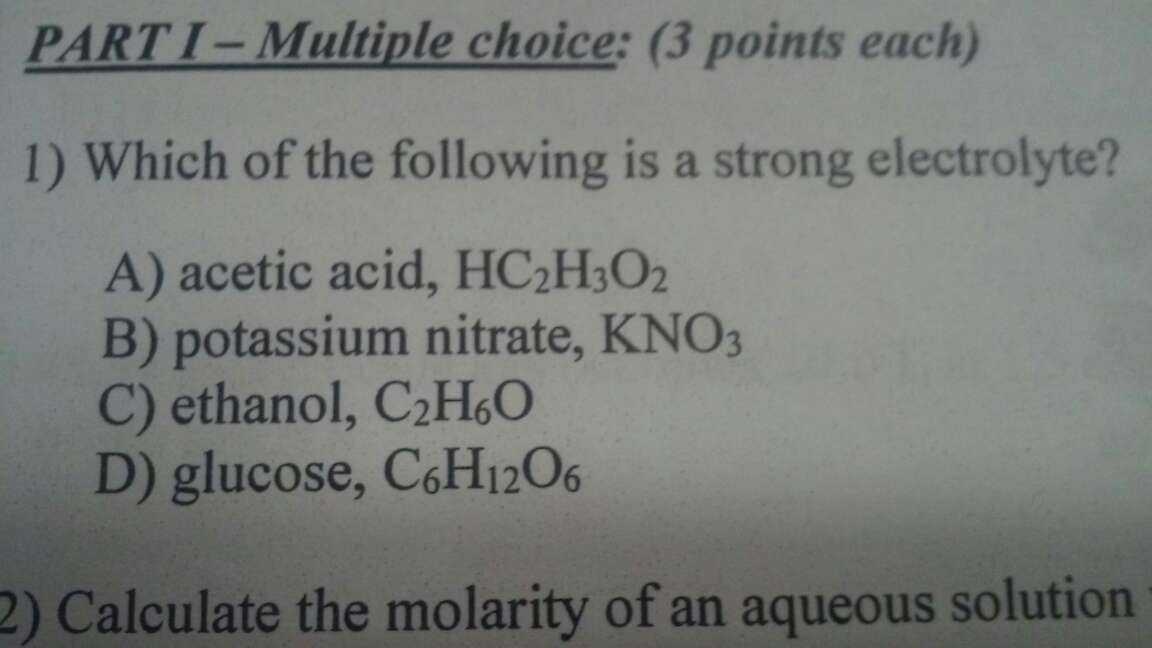
The answer is B because it is the only ionic compound.
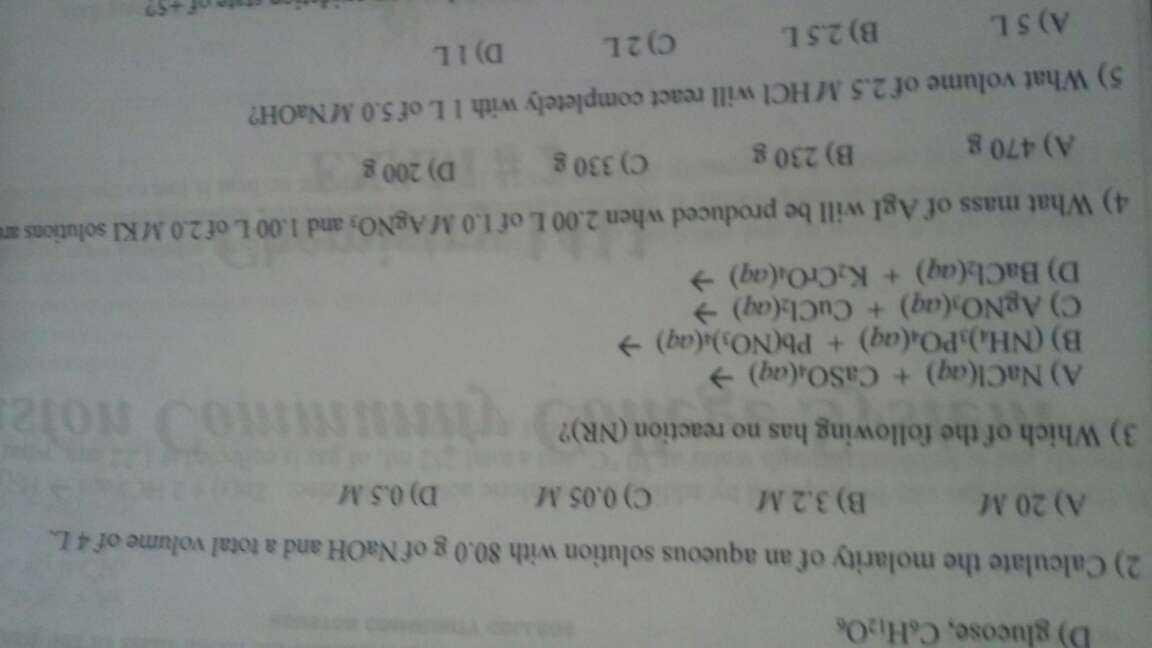
Question 2)
According to http://www.chemicalelements.com/show/mass.html
The atomic mass of Sodium is 22.989770
The atomic mass of Hydrogen is 1.00794
The atomic mass of Oxygen is 15.9994
Therefore the molecular mass of Sodium Hydroxide is 39.99711
80g of Sodium Hydroxide is 2.00014451 mole
Therefore the Molarity is 2.00014451/4 = 0.500036128M
Question 3)
The answer is A
http://www.chemicalforums.com/index.php?topic=14614.0
Question 4)
The balanced equation should be
$ AgNO_3 + KI -> AgI + KNO_3 $
Therefore all the reactants will be used up to produce $ 2 \times 1 $ = 2 mole of $ AgI $
The atomic mass of Silver is 107.8682
The atomic mass of Iodine is 126.90447
Therefore the molecular mass of Silver Iodide is 234.77267
2 mole of Silver Iodide will weight $ 234.77267 \times 2 = 469.54534 gram $.
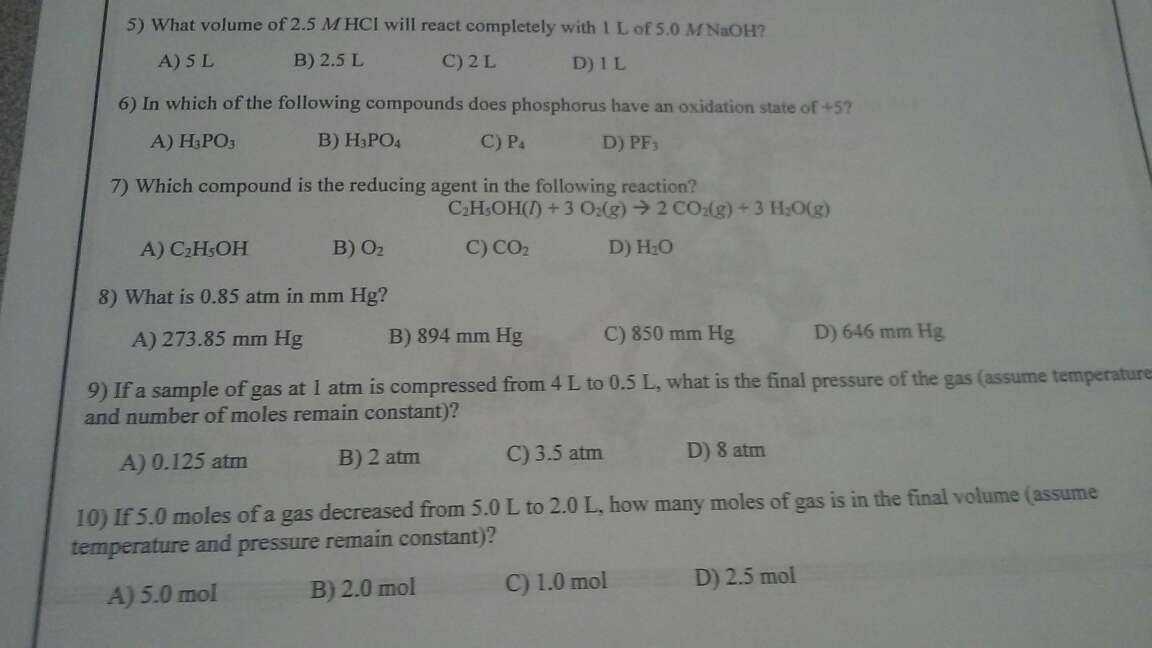
Question 5)
There are $ 1 \times 5 $ = 5 mole of Sodium Hydroxide around, so we can react completely with 5 moles of Hydrochloric acid as well. That would mean $ 5 \div 2.5 = 2 $ liter.
Question 6)
$ H_3PO_4 $
The oxidation state of H is + 3, therefore the oxidation state of $ PO_4 $ is -3, while O has oxidation state -8, therefore P must have oxidation state +5 there.
Question 7)
https://en.wikipedia.org/wiki/Reducing_agent
The oxygen is reduced, so it is the oxidizing agent, therefore the other is the reducing agent.
Question 8)
1atm = 760mmHg, therefore 0.85atm = 646 mmHg
Question 9)
The ideal gas equation give PV = nRT, if n (number of moles) and T (temperature) do not change, R also do not change as it is a universal constant, that PV is a constant.
Therefore $ 1 \times 4 = P \times 0.5 $. P = 8atm.
Question 10)
Ideal gas equation applies again. PV = nRT implies P/RT = n/V. Left hand side does not change, so the answer is 2 mol.
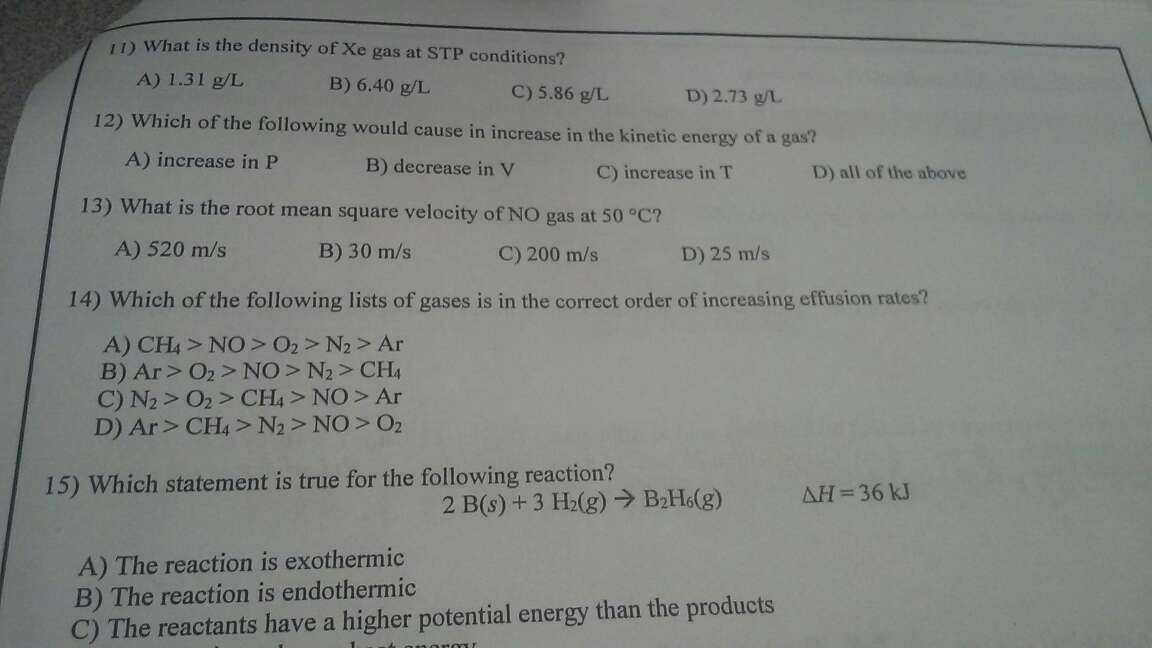
Question 11)
Just Google this one, we get
At standard temperature and pressure, pure xenon gas has a density of5.761 kg/m3, about 4.5 times the surface density of the Earth's atmosphere, 1.217 kg/m3. As a liquid, xenon has a density of up to3.100 g/mL, with the density maximum occurring at the triple point.
Now 1 liter is 0.001 cubic meter
1 kilogram is 1000 gram
Therefore the answer is 5.761 gram per liter, choice C is pretty close.
Question 12)
All the choice will increase kinetic energy.
Question 13)
I learn something new here.
http://chemistry.about.com/od/workedchemistryproblems/a/Calculate-Root-Mean-Square-Velocity-Of-Gas-Particles.htm
At 50 degree Celsius, we have 273 + 50 = 323 kelvins
R = 8.3145 as usual
Atomic mass of Nitrogen is 14.00674
Atomic mass of Oxygen is 15.9994
Molecular mass of Nitrogen Monoxide is 30.00614
Convert to kg per mole, we divide by 1,000.
Therefore the rms velocity is $ \sqrt{3 \times 8.3145 \times 373 \div (30.00614 \div 1000)} = 556.837 $.
The closest answer is A
Question 14)
Again I learn something new here
https://en.wikipedia.org/wiki/Effusion
By Graham's law, we are really just comparing molecular mass.
Atomic mass of C is 12.0107
Atomic mass of H is 1.00794
Atomic mass of N is 14.00674
Atomic mass of O is 15.9994
Atomic mass of Ar is 39.948
The correct order is therefore CH4 > N2 > NO > O2 > AR (In term of rate values)
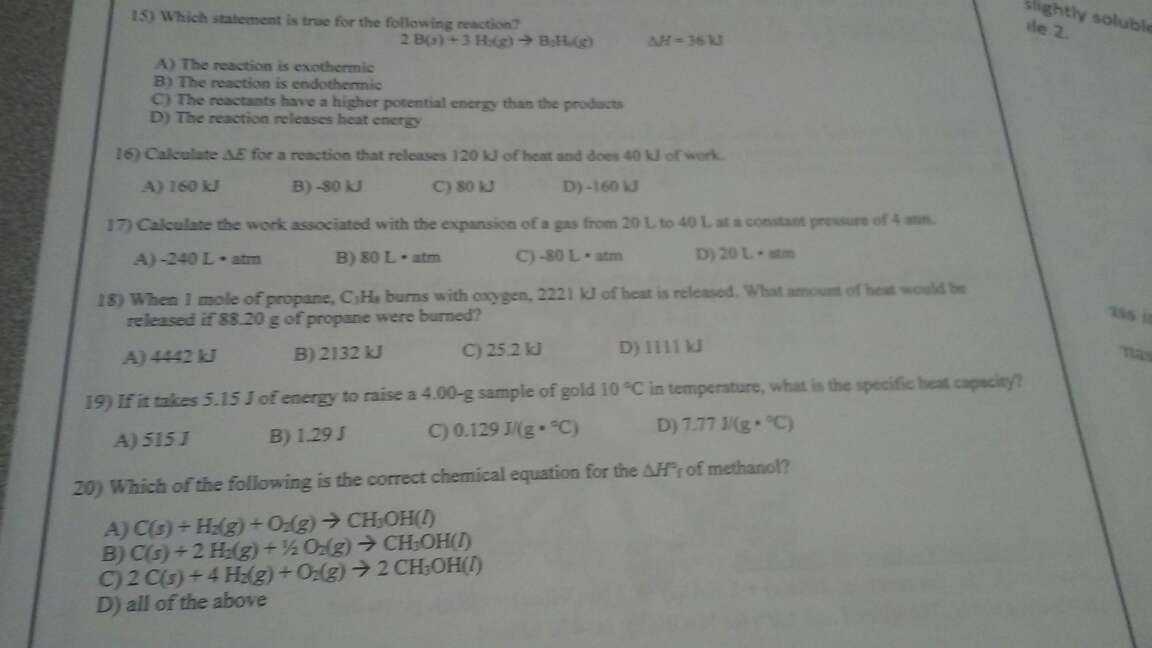
Question 15)
https://en.wikipedia.org/wiki/Enthalpy
A relatively easy way to determine whether or not a reaction is exothermic or endothermic is to determine the sign of delta H. If delta H is positive, the reaction is endothermic
Question 16)
As a reaction release heat and does work, the total energy dissipated is 160kJ, that must also be the drop of the internal energy, therefore the answer is D
Question 17)
Skipped.
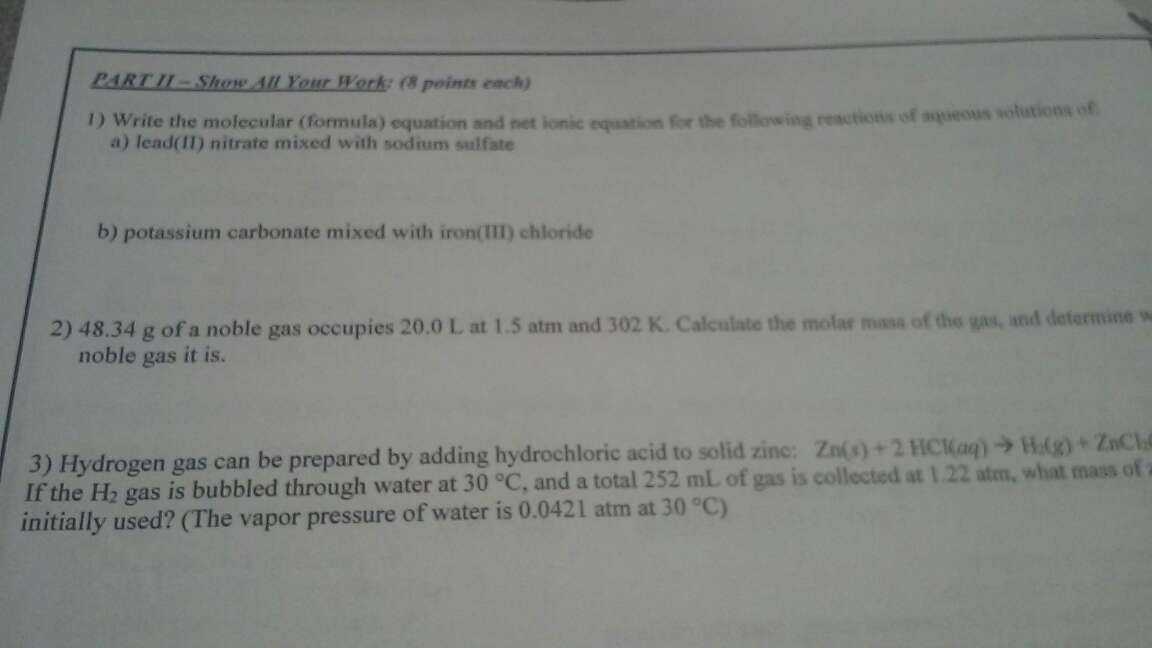
Long Question 2)
P 1.5
V 20
R 0.082057
T 302
PV/RT = n = 1.210594445, therefore, we have 39.93079616 g per mole, it is Argon
Long Question 3)
P = 1.22
V = 0.252
R = 0.082057
T = 30+273 = 303
PV/RT = n = 0.012365227, therefore we have used that many zinc
The atomic mass for Zinc is 65.39, therefore we have 0.80856222 gram of zinc
Long Question 4)
m = (100 + 100) [mL] x 1 [g/mL] = 200g
c = 4.18J/C/g =
delta T = 29.1 - 22.4 = 6.7
Energy = 5601.2J
No heat loss, so that's the heat change.
Long Question 5)
Take the first two reaction backward and just them all up.
91.8 + 74.9 + 270 =436.7kJ
No comments:
Post a Comment